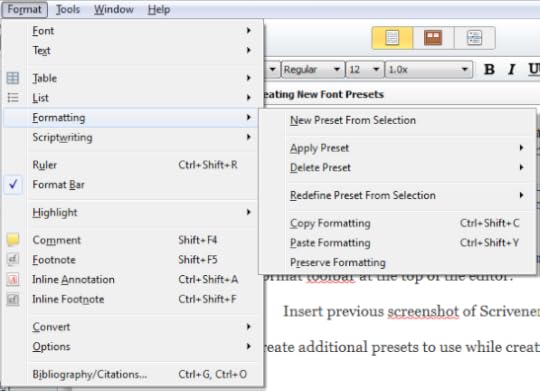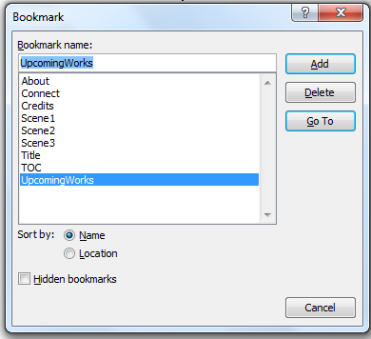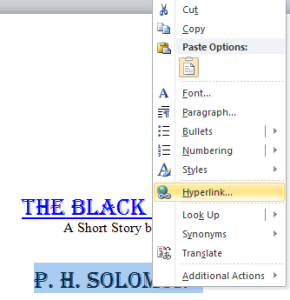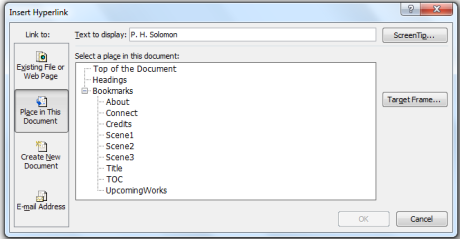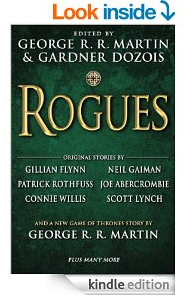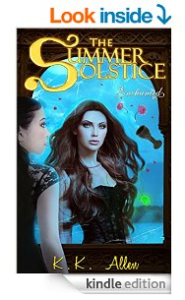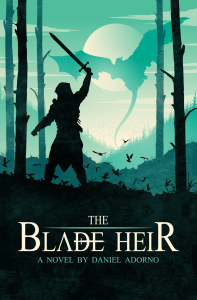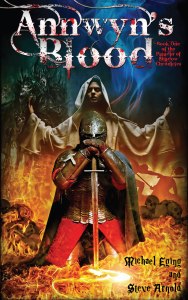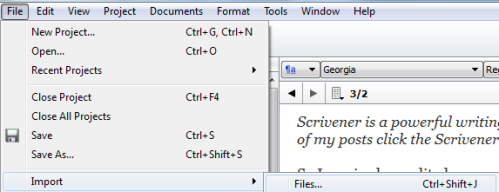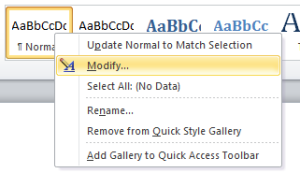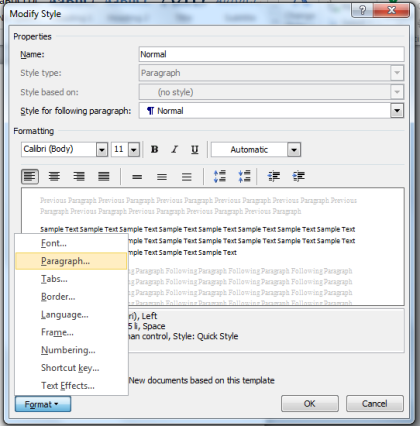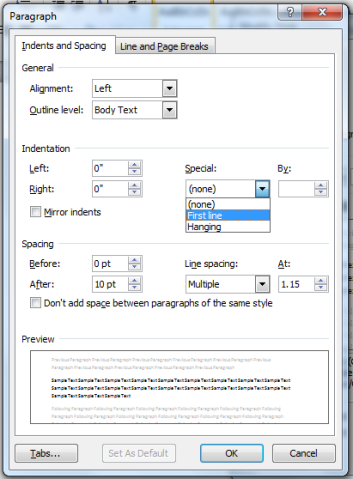P.H. Solomon's Blog, page 310
March 9, 2015
Starting An Author Platform Pt. 2: The Domain
 To begin creating your writing platform you will need a foundation just like for a building. The foundation for an author platform is a domain. But what is a domain? How do you get a domain? Why is it so important? Let’s take these questions in order and then discuss aspects of designing your platform to suit your needs.
To begin creating your writing platform you will need a foundation just like for a building. The foundation for an author platform is a domain. But what is a domain? How do you get a domain? Why is it so important? Let’s take these questions in order and then discuss aspects of designing your platform to suit your needs.
Without getting too technical, a domain is a name reserved for you on the internet. As the owner of the domain you have administrative control to maintain what will become your site. Registering a domain is usually done on a yearly basis and costs a small fee. You choose the name based on availability.
How you get a domain is a different matter altogether. Many hosting services offer to register the name you choose as part of your hosting plan. For instance, my site is hosted on WordPress.com and when I signed up for my free site, I chose to pay $10 to have WordPress register my domain name. There are just a few services that actually handle the business of registration and maintenance of the internet’s domain database so allowing your hosting service to register for you simplifies the process and allows you to get started sooner with working on your site. However, it may take a few days for your domain to be available across the internet.
Follow Blog via Email
Enter your email address to follow this blog and receive notifications of new posts by email.
 Having your own domain is very important for several reasons. First, the name you choose makes your site easily identifiable with you the author and the content you create. Next, it provides you a domain for an email account that solidifies your identity (we’ll discuss email in a later post). Lastly, your domain is under your control so make the decisions about its use and maintenance are yours as long as you own the domain name/site.
Having your own domain is very important for several reasons. First, the name you choose makes your site easily identifiable with you the author and the content you create. Next, it provides you a domain for an email account that solidifies your identity (we’ll discuss email in a later post). Lastly, your domain is under your control so make the decisions about its use and maintenance are yours as long as you own the domain name/site.
So how should you go about obtaining a domain and deciding what to name it? Since there are so many different hosing services available on the internet you should shop around and decide what best suits you. For me, I didn’t want to commit to a long-term contract with hundreds of dollars in expense (or evening a sizable monthly expense otherwise) without having writing income. At the moment, I have some income and it pays for another needs so I chose to go with WordPress.com as a free site (registration is separate). I can at a later time, upgrade my site on WordPress or move it to an independent hosting service. This decision left me the flexibility to grow when I need to do so without a lot of stress to produce income before I was ready.
 Naming your domain that is up to you so choose carefully since this will identify you as a professional author. I suggest using something that clearly equates to you so avoid using your novel title at first or a whacky name unless it suits what you are writing. If you want to reserve book titles as domains do so as additions to your main domain (sub-domains may be limited by your contract or cost extra depending on the service you choose). If you are writing a book series, try registering the series when it becomes necessary. My own site is named for me so you know who I am and I feel lends me professionalism. This is especially important if you plan to work with traditional publishers and magazines.
Naming your domain that is up to you so choose carefully since this will identify you as a professional author. I suggest using something that clearly equates to you so avoid using your novel title at first or a whacky name unless it suits what you are writing. If you want to reserve book titles as domains do so as additions to your main domain (sub-domains may be limited by your contract or cost extra depending on the service you choose). If you are writing a book series, try registering the series when it becomes necessary. My own site is named for me so you know who I am and I feel lends me professionalism. This is especially important if you plan to work with traditional publishers and magazines.
So there you have it, a short discussion on the details of a domain. I hope you have a better understanding of what you should do to acquire one, name it and how to choose a service based on your budget. If you are just beginning, do your research in depth, shop around and proceed with a plan.
 If you have a domain, how did you choose your service and name? What ideas can you share with new authors? Please share your thoughts and ideas in the comments section. I’d also love to connect with you over social media so check my Contact page for that information. See the News page for announcements and remember to sign-up to receive news and posts by email. I’ve added a new sign-up tab on my FaceBook page to simplify the process. New followers can download The Black Bag via free coupon today! Also, the cover of my book, The Bow of Destiny, was revealed recently so take a look.
If you have a domain, how did you choose your service and name? What ideas can you share with new authors? Please share your thoughts and ideas in the comments section. I’d also love to connect with you over social media so check my Contact page for that information. See the News page for announcements and remember to sign-up to receive news and posts by email. I’ve added a new sign-up tab on my FaceBook page to simplify the process. New followers can download The Black Bag via free coupon today! Also, the cover of my book, The Bow of Destiny, was revealed recently so take a look.
Follow Blog via Email
Enter your email address to follow this blog and receive notifications of new posts by email.
Clip art licensed through Microsoft Office. “You Are Here” photo courtesy Morguefile.com free photo section (pippalou is the photographer). Book cover licensed on commission from Christopher Rawlins.
Filed under: Blogging, Cover Reveal, Creativity, Editing, Fiction, Goodreads, Indie Publishing, Marketing, Planning, Self-publishing, Tech Tips, The Black Bag, The Bow of Destiny, Tips, Twitter, Writing Tagged: blogging, Coverart, creativity, Facebook, Indie Publishing, Marketing, P. H. Solomon, Self-publishing, Social Media, The Black Bag, The Bow of Destiny, Twitter, writing

March 8, 2015
Formatting Pt. 4: Creating New Scrivener Presets
Scrivener is a powerful writing tool. I write about it weekly with tips and usage ideas. To read more of my posts click the Scrivener tag or category at the end of the page.
In previous posts on this topic I covered formatting for an e-book. using styles in Word and creating bookmarks/hyperlinks using Word to enhance your manuscript for publication. But I also mentioned using preset styles in Scrivener so I’m covering that today.
Much like with Word you can use preset format styles to easily change formatting in your Scrivener documents. These are located in the Format toolbar at the top of the editor:
However, if you want to create additional presets to use while writing, here are the steps to do that:
1. Create some content with the formatting you wish to use or open a document in Scrivener that already has this formatting.
2. Make sure you’ve click into the formatted area you want to use for a preset.
3. Click on Format, Formatting, New Preset from Selection:
4. Name the preset and click OK.
To use presets you have created click within the content paragraph or highlight all the content to be changed and select it from the list of presets in the formatting toolbar (see the first screenshot above) or in the Formatting menu click Apply Preset to choose what you want. You can also delete presets from the Formatting menu should you find you no longer need a preset. Once you have your preset(s) created you can also apply them to your document templates and project templates to get to work even faster.
 Have you used presets in Scrivener before? Do you have specific presets created that may help other Scrivener users? Please share your thoughts and ideas in the comments section. I’d also love to connect with you over social media so check my Contact page for that information. See the News page for announcements and remember to sign-up to receive news and posts by email. I’ve added a new sign-up tab on my FaceBook page to simplify the process. New followers can download The Black Bag via free coupon today! Also, the cover of my book, The Bow of Destiny, was revealed recently so take a look.
Have you used presets in Scrivener before? Do you have specific presets created that may help other Scrivener users? Please share your thoughts and ideas in the comments section. I’d also love to connect with you over social media so check my Contact page for that information. See the News page for announcements and remember to sign-up to receive news and posts by email. I’ve added a new sign-up tab on my FaceBook page to simplify the process. New followers can download The Black Bag via free coupon today! Also, the cover of my book, The Bow of Destiny, was revealed recently so take a look.
Follow Blog via Email
Enter your email address to follow this blog and receive notifications of new posts by email.
Just as a note: I am not affliated with Scrivener in any official capacity. For support questions, pricing and other concerns please contact the vendor.
Filed under: Uncategorized

Project Management Pt. 2: Analyzing Time

Clip Art Image Copyright by Microsoft. Clip Art Used by Permission of Microsoft
This is an ongoing series about managing writing-related projects. In this edition I want to get deeper into analyzing time. The original post is here.
Here’s what I wrote from the previous post on this subject regarding analyzing time:
Analyze your time : Most writers these days are making a go of being a professional on the side. However, if you are unaware of how much time you have during the week you may be expecting too much or too little of yourself. Take a few minutes to calculate how much time you have in a regular week to use for writing. It is important not to be honest with yourself about your available time so you can apply the following tips. Over-estimating how much time you have may mean being frustrated that you are not completing writing projects and tasks as expected so be reasonable.
So, to expand on this idea, there are two tasks you need to accomplish:
Analyze your available time: You may need to take an average week and survey what time you have free to work on anything writing related. In doing so, you may find you have more or less time than you thought. Either way you have a solid idea of your availability and what you can do to schedule that time as well as manage that availability from week to week and day to day. If you have a family you can communicate when you will be busy with writing in order to work undisturbed. Regardless, you have a block of time and it’s like a container which you can fill your with your flexible schedule.

Clip Art Image Copyright by Microsoft. Clip Art Used by Permission of Microsoft
Next, track how long it takes to work through a task. If you are editing, how long with it take to do the type of editing you are on for each chapter? How long does it take you to update social media? How long does it take to write a blog? Be as specific as possible with each type of activity while understanding sometimes a chapter or blog takes longer to work on than others might – it’s just an average but be as accurate as you can. Once you have these identified you have an idea of how much of how much time it will take to complete a project or activity so you can approach your schedule with a sense of accuracy and focus.
The importance of all this is that once you know your actual availability you know how to schedule. That’s like the foundation of managing your projects. Next I will hit on approaching your schedule with a sense of priority.
Have you ever checked how much time have to write? Do you know how much time it takes to do specific writing activities? Please leave a question, idea or strategy in the comment section because I’d love to hear from you. I’d also love to connect with you over social media so check my contact page for that information. See the News page for announcements and remember to sign-up to receive news and posts by email. I’ve added a new sign-up tab on my FaceBook page to simplify the process. New followers can download The Black Bag via free coupon today!
Thanks for visiting!
PHS
Clip Art Image Copyright by Microsoft. Clip Art Used by Permission of Microsoft
Two clocks clip art – Image by © Royalty-Free/Corbis
[contact-form]
Filed under: Blogging, Creativity, Editing, Fiction, Indie Publishing, Planning, Self-publishing, Social Media, The Black Bag, Tips, Twitter, Writing Tagged: creativity, Indie Publishing, P. H. Solomon, Planning, Social Media, The Black Bag, Tips, Twitter, writing








March 7, 2015
Project Management Pt1: Learn to Juggle
 As a writer there are many different hats to wear in addition to writing. These can range from aspects of platform management to advertising. If you have limited time per week but have many different tasks and projects to address life can be very confusing. You may find yourself accomplishing less and less when you really need to do more. Part of this problem comes from disorganization. Here are some tips to untangle the knots of work you want to accomplish by applying some analysis.
As a writer there are many different hats to wear in addition to writing. These can range from aspects of platform management to advertising. If you have limited time per week but have many different tasks and projects to address life can be very confusing. You may find yourself accomplishing less and less when you really need to do more. Part of this problem comes from disorganization. Here are some tips to untangle the knots of work you want to accomplish by applying some analysis.
1. Analyze your time: Most writers these days are making a go of being a professional on the side. However, if you are unaware of how much time you have during the week you may be expecting too much or too little of yourself. Take a few minutes to calculate how much time you have in a regular week to use for writing. It is important not to be honest with yourself about your available time so you can apply the following tips. Over-estimating how much time you have may mean being frustrated that you are not completing writing projects and tasks as expected so be reasonable.
2. Analyze your projects and tasks: This seems straightforward but take time to really think this through. Perhaps you have a novel with a deadline, a short story or two that should be completed soon, blogs to post, social media to manage and any number of other writing-related jobs to address in a week. Assign priority to the items on your list at a monthly, weekly and daily level. Assign goals to your projects and be specific about what you expect – without specificity you only have good intentions. How many hours will your project take to complete? On what are you basing your criteria for priorities? Time? Immediate income? Long-term income? How much time do you need to spend on writing-related tasks? Once you understand this proceed to the next tip.

Editing for Deep POV
3. Compare time needed to time available: You know how much time you have per week and how much time a project and tasks need but how do they mesh together? Perhaps you have a novel to revise and estimate 50 hours of work. If your deadline is a month away then based on your weekly available time you know how much time is available to assign per week to the revision using a little math. Now you have a reasonable expectation for daily and weekly goals. But hold on there! You also have other tasks or projects during the week to address. In this case you should scale back expectations on the revision and assign how much time you need for these other jobs. Here’s where knowing your priorities comes into play. If you know your long-term, main priority is finishing the novel then it gets both weekly and daily priority, meaning it gets the lion-share of time applied to it. However, say you need to complete blog posts during the week. Since these are shorter and need regular attention your might assign time each day to blog. Or you might develop all of a week’s worth of posts in one day and then schedule them to be published. It’s up to you to divvy up the time that meets your needs according to priorities and available time. Regardless, you must make reasonable time for each item that needs your attention during the month/week/day in order to know what to expect.
4. Be very specific: Schedule your time with specificity in order to set your expectations. If you are vague then you will tend toward accomplishing less because you don’t know what you are doing. For example, rather than scheduling thirty minutes several times a day to edit/revise a project with the stated goal of “edit”, be more precise and name what you will edit, how much for the day and how you will accomplish this goal. In other words, thirty minutes of editing several times a day to reach a minimum goal of ten pages in your novel project until you reach your allotted time for the day (remember, you have allotted time to other duties such as social media management). This gives you focus. Since you know that you should apply three hours a day to this priority then you know how to schedule it and everything else for each day, week and month.
5. Be fluid/realistic: You will often fall off the pace if you are unrealistic. What do I mean by this? Simply that you will have real-life issues arise that need your attention so expect your schedule to have interruptions. Go into working your scheduling and project management with the understanding that you need to be fluid – willing to adjust. But this does not mean give yourself excuses for accomplishing nothing, after all, this is why you’re attempting to manage the project(s) better. You must schedule with flexibility either by lowering daily/weekly/monthly expectations or having a tolerance for problems and being nimble enough to adjust for interruptions. Regardless, you are the manager of the project and you must take responsibility for it to complete it.
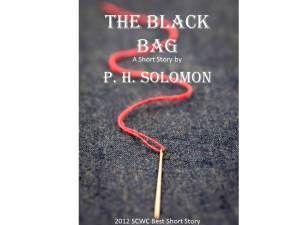
Available at Amazon, Smashwords and All Major E-Book Vendors!
How do you manage your projects? Do you plan your time around a schedule? Do you know how long projects and tasks usually take? Please share your thoughts and ideas in the comments section. I’d also love to connect with you over social media so check my Contact page for that information. See the News page for announcements and remember to sign-up to receive news and posts by email. I’ve added a new sign-up tab on my FaceBook page to simplify the process. New followers can download The Black Bag via free coupon today! Also, the cover of my book, The Bow of Destiny, was revealed recently so take a look.
Follow Blog via Email
Enter your email address to follow this blog and receive notifications of new posts by email.
Clip Art Image Copyright by Microsoft. Clip Art Used by Permission of Microsoft
Series Links:
Project Management Pt. 2: Analyzing Time, Project Management Pt 3: Balancing Projects and Tasks, Project Management Pt 4: The Jigsaw Puzzle, Project Management Pt 5: Putting the Pieces Together, Project Management for Writers Pt 6: My Own Medicine, Project Management for Writers Pt. 7: My Schedule Mole
Filed under: Creativity, Editing, Fiction, Indie Publishing, Planning, Self-publishing, Social Media, The Black Bag, Tips, Twitter Tagged: creativity, Indie Publishing, Marketing, P. H. Solomon, Planning, Self-publishing, Social Media, The Black Bag, Tips, Twitter, writing








March 5, 2015
A Blogging Fool: 5 Reasons Why I Write & Post Daily
If you’re familiar with this website then you know I blog five days a week and re-post during the weekends. It can be a hectic schedule and for many authors there is the legitimate question of why even do so since it can take away from valuable time writing books. Now I don’t advocate that everyone should blog as much as I currently do since everyone is different. Likewise, I may find that I need to adjust my schedule in the future for various reasons. However, I thought I’d share why I post blogs so frequently at this time. Here are 5 reasons why I blog on my current schedule:
1. I enjoy blogging. I didn’t think that I would like hosting a blog but I’ve found that I like it very much. Therefore, I want to blog as often as I’m able.
2. I write a blog post because it’s a great creative outlet. I’ve found that I often generate fiction and blog ideas through writing my posts as well as other writing outlets. It keeps my creativity active.
3. It keeps me motivated. Rather than feeling like a drudgery or a waste/drain of writing time, I’ve found that writing posts actually keeps me motivated and enthused about writing as a whole. As such, I’ve begun to receive requests to write guest posts and interviews for other blogs which is very beneficial to my author platform.
Follow Blog via Email
Enter your email address to follow this blog and receive notifications of new posts by email.
4. I can write ahead of my schedule and adjust it as needed. I write as often as I can, sometimes several posts a day depending on my schedule and the number of ideas I have. This allows me to stay ahead of my schedule most weeks. If something happens, like being sick, then I’m not under pressure to post or suspend my blog. There’s less stress. In fact, I was sick several weeks ago and really didn’t feel well for a week but I was so far ahead I could just rest. My main problem since then has been getting back in the creative flow.
5. Yes, it’s a marketing tool but this reason is the least of my reasons. However it’s one way to get content in front of readers. As I mentioned above, I’m now receiving requests for guest posts on other blogs. This great for expanding my visibility. My novel is not due out until later in the year but blogging serves as a foundation for marketing toward the launch.
How often do you write blog posts? Why do you post on your current schedule? Please share your thoughts and ideas in the comments section. I’d also love to connect with you over social media so check my Contact page for that information. See the News page for announcements and remember to sign-up to receive news and posts by email. I’ve added a new sign-up tab on my FaceBook page to simplify the process. New followers can download The Black Bag via free coupon today! Also, the cover of my book, The Bow of Destiny, was revealed recently so take a look.
Follow Blog via Email
Enter your email address to follow this blog and receive notifications of new posts by email.
Filed under: Blogging, Cover Reveal, Creativity, Editing, Guest Blog, Indie Publishing, Marketing, Planning, Self-publishing, Social Media, Tech Tips, The Black Bag, The Bow of Destiny, Tips, Twitter Tagged: blogging, Coverart, creativity, Editing, Facebook, Goals, Indie Publishing, Launch, Marketing, P. H. Solomon, Planning, Self-publishing, The Black Bag, The Bow of Destiny, Tips, Twitter, writing

March 4, 2015
Formatting Pt. 3: The Secrets Of Internal Bookmarks & Hyperlinks
This is the 3rd part of a how-to series covering e-book formatting. The previous posts are:
The Great Formatting Conundrum & What To Do About It
Styling Your E-Book With Proper Formatting
 If you’ve ever started going somewhere unfamiliar you may have realized you were confused about where you were going or just in the incorrect location altogether. It can be a frustrating feeling to not quite understand how to get where you want to be. The same can be true of an e-book that is incorrectly formatted with internal hyperlinks or lacks them entirely.
If you’ve ever started going somewhere unfamiliar you may have realized you were confused about where you were going or just in the incorrect location altogether. It can be a frustrating feeling to not quite understand how to get where you want to be. The same can be true of an e-book that is incorrectly formatted with internal hyperlinks or lacks them entirely.
But what are internal hyperlinks and bookmarks? These are links just like in this post that lead to other posts. However in the case of an e-book they help the reader navigate through the content.
But if an e-reader saves the last place where you were reading, why are internal hyperlinks and bookmarks needed? In the case of fiction they may not be needed at all but they are convenience to the reader which allows them to get back to the contents page easily should they need to do so. It can be more important if you are writing a work of non-fiction where readers may want to jump to other content within a book or chapter.
Here’s a quick how-to about making internal links should you deem the necessary in your e-book? I’ll again reference from the Smashwords Style Guide by Mark Coker which has more in-depth instructions. But for now, here are the basics. If you are doing your own formatting strongly suggest using this guide or something similar.
You need a Table of Contents for your book. You should include one that shows your chapters as well as the various pages of front material as well as what you may add as additional information at the end of your book. Also, make sure your chapters have titles even if it’s as simple as “Chapter 1”.
Follow Blog via Email
Enter your email address to follow this blog and receive notifications of new posts by email.
Next, you’ll open Word and add your bookmarks. To do so, highlight the text you are hyperlinking and then click “Insert” on Word’s ribbon menu and then choose “Bookmark”.
Type the name of your bookmark without spaces and click add. For example for “Chapter 1” add “Chapter1” (no spaces). Also, you may find it best to add all your chapter bookmarks first.
Now create hyperlinks in your Table of Contents by highlighting the text and right-clicking on it to see the context menu.
Then click on “Hyperlink” and the “Insert Hyperlink” window will then appear like below:
From the left side of the window click “Place in this document” and you will see a list of your bookmarks. In this example choose “Chapter1” (not pictured since I used my short story for the screen-shots). Repeat steps 4 & 5 for all the chapters and sections you are linking to your table of contents.
Conversely, you can also link all your chapters to the table of contents by highlighting the title, “Table of Contents” and create a bookmark for it as in steps 2 & 3. After that, you go to each of your chapter or section titles and follow steps 4 & 5 but always choose the bookmark you created for “Table of Contents”.
Test that each link jumps you to chapters and back to the table of contents. Correct as necessary. The best way to view formatting and test your hyperlinks is by using Adobe Digital Editions which is a free download.
Using bookmarks and hyperlinks is a great way to let your readers jump through your e-book with little effort. It’s also important to use these for other pages in the book such as acknowledgments, copyright, your biography page, etc.
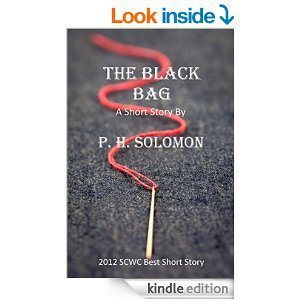 Have you formatted bookmarks and hyperlinks for your e-books? Please share your thoughts and ideas in the comments section. I’d also love to connect with you over social media so check my Contact page for that information. See the News page for announcements and remember to sign-up to receive news and posts by email. I’ve added a new sign-up tab on my FaceBook page to simplify the process. New followers can download The Black Bag via free coupon today! Also, the cover of my book, The Bow of Destiny, was revealed recently so take a look.
Have you formatted bookmarks and hyperlinks for your e-books? Please share your thoughts and ideas in the comments section. I’d also love to connect with you over social media so check my Contact page for that information. See the News page for announcements and remember to sign-up to receive news and posts by email. I’ve added a new sign-up tab on my FaceBook page to simplify the process. New followers can download The Black Bag via free coupon today! Also, the cover of my book, The Bow of Destiny, was revealed recently so take a look.
Follow Blog via Email
Enter your email address to follow this blog and receive notifications of new posts by email.
Photo courtesy Morguefile.com free section
Filed under: Blogging, Cover Reveal, Creativity, Editing, Fiction, Indie Publishing, Planning, Self-publishing, Social Media, Tech Tips, The Black Bag, The Bow of Destiny, Tips, Twitter, Writing Tagged: blogging, Coverart, creativity, Editing, Facebook, Formatting, Indie Publishing, P. H. Solomon, Planning, Self-publishing, The Black Bag, The Bow of Destiny, Twitter, writing








March 3, 2015
Recent Reviews: Rogues and Summer Solstice
Introduction
Today, instead of an interview, I’m sharing reviews of some of my recent reads. Reviews are part of my goals for the year so I’m sharing some after I post ratings and reaction online. These will explain more of my thoughts about books than in shorter versions posted on Amazon, Goodreads, etc.
One of the books I’ve recently read was an anthology entitled, Rogues, which is edited by George R. R. Martin and features short stories by a number of top authors. An anthology is different from a novel to review since there are so many different stories and authors. As such some stories may be appealing and others less so based on personal preference so I’ll stay away from too much commentary on individual stories.
The book was well edited and the writing was well done. Again, some stories had less appeal to me than others and I would have liked to see the whole book dedicated to fantasy so be aware that some stories have real world settings sans fantasy. The theme of rogues was quite interesting and covered a wide variety of questionable characters, some likable and some down-right despicable but I found the scope of rogues intriguing.
However, I must comment that I was disappointed with Martin’s fiction contribution. His story was more of a narrative companion to his own series. But the piece was just a narrative rather than a story with characterization so it lacked appeal to me though it explained some of the history of Westeros and the Seven Kingdoms. Martin’s name is prominent on the book so the reader expects a little something more than a distantly portrayed short fiction that lent little to the anthology’s theme. I gave it four stars based on the work of other writers but it could have been five if Martin had contributed better content.
Next we turn from an anthology of experienced writers to a YA novel by a first-time author. I read Summer Solstice by K. K. Allen who is a fellow member of Rave Reviews Book Club where I’m a VIP member. With that in mind it’s easy to write a favorable review for a fellow member but as a club we are intent on reviewing with promoting quality.
Here’s the review I posted on Amazon and Goodreads with a four star rating:
This is a YA paranormal/urban fantasy novel by a first-time author about which begins with a teenager Katrina Summer, grieving over the death of her mother. She moves in with her grandmother whom she doesn’t know all the while having strange dreams and occurrences which she thinks are caused by grief. But there are secrets and answers waiting to be discovered by Katrina. It’s a mixture of magic and mystery for a solid first effort by author K. K. Allen. I would love to read her next novel to find out what happens and how the author is growing with her writing craft.
Now for a little clarification on the review. In rating the novel I rounded up from 3.5 stars which is how the book struck me upon finishing (however, I was unable to rate as precisely as I would like). The beginning was a little slow but still intriguing and the story picked up with a series of increasingly mysterious events for Katrina Summer.
One of the points that struck me (and this may just be my own personal preference) was the style with which the novel was written. The first person, present tense was a bit awkward and made me feel like the story was backpedaling while going downhill. Again, this is from a first-time author so I took this in stride but did find that I was willing to continue turning pages. I also feel that Ms. Allen exhibits ability that will only improve with each book and as such I’m interested to see both what happens with Katrina Summer and how the author’s writing craft develops.
I’m currently reading the following books for which the authors were interviewed during the last few months on this site:
Annwyn’s Blood by Michael Eging & Steve Arnold
The Blade Heir by Daniel Adorno
I’ll share my thoughts on these books once completed in the near future. Look for more author interviews in coming weeks as well.
What books have you read recently and did you like them? Please share your thoughts and ideas in the comments section. I’d also love to connect with you over social media so check my Contact page for that information. See the News page for announcements and remember to sign-up to receive news and posts by email. I’ve added a new sign-up tab on my FaceBook page to simplify the process. New followers can download The Black Bag via free coupon today! Also, the cover of my book, The Bow of Destiny, was revealed recently so take a look.
Follow Blog via Email
Enter your email address to follow this blog and receive notifications of new posts by email.
Filed under: Amazon, Blogging, Cover Reveal, Creativity, Fantasy, Fiction, Indie Publishing, Marketing, Rave Review Book Club, Reviews, Self-publishing, Short Stories, Social Media, The Black Bag, The Bow of Destiny, Twitter, Writing Tagged: blogging, Coverart, creativity, Facebook, Fantasy Fiction, Goodreads, Indie Publishing, Marketing, P. H. Solomon, Rave Reviews Book Club, Self-publishing, Short Stories, Social Media, The Black Bag, The Bow of Destiny, Twitter, writing

March 2, 2015
Start Your Author Platform Pt. 1
 I’ve recently had a friend begin building a writing platform so I’ve handed out some advice and suggestions. I’ve written about some of my work over the last year in building my own platform so I thought I’d start a how-to/advice series. Though I’m far from being expert, I do have some tidbits that may prove useful to aspiring authors. Back in December, I wrote a series reviewing my year as an author so I’ll build on those posts with some specifics about what I’ve done and why as well as what I’ve learned.
I’ve recently had a friend begin building a writing platform so I’ve handed out some advice and suggestions. I’ve written about some of my work over the last year in building my own platform so I thought I’d start a how-to/advice series. Though I’m far from being expert, I do have some tidbits that may prove useful to aspiring authors. Back in December, I wrote a series reviewing my year as an author so I’ll build on those posts with some specifics about what I’ve done and why as well as what I’ve learned.
So, for starters, here’s what an author is facing when building a writing platform. You’ll need the following:
 A registered domain – it’s best to have a domain named for you as an author. This is important for branding your content. This branding associates your name with what you write. This is how people find you to learn more about what you write. Don’t name your domain something outlandish as this will not add anything to your brand and could take away from it – think professional. You can register a domain any number of ways but usually you can pay for it when you setup your hosting.
A registered domain – it’s best to have a domain named for you as an author. This is important for branding your content. This branding associates your name with what you write. This is how people find you to learn more about what you write. Don’t name your domain something outlandish as this will not add anything to your brand and could take away from it – think professional. You can register a domain any number of ways but usually you can pay for it when you setup your hosting.A website and/or blog – Next you’ll need a website. Depending on how your hosted there will be different tools available. If you’re on a budget try using free hosting with something like WordPress. You can create a simple design for your site. It may be important to blog as well so think in those terms as you design your site. Running a blog can be important to attracting readers who begin to trust your writing.
An email address using your registered domain – your email address should be easily associated with you as a writer so use a name that makes since. Also, if you are on a tight budget you can have your email hosted over Google at minimal cost. I chose to pay monthly in case I move to a full-fledged hosting service. This way I’m out of Google easily without having paid ahead and wasting money.
Various social media accounts using your author email – that email address now becomes important since you will likely setup all your social media channels with it. But with what social media should you start? Don’t overdo it with too many. Twitter is very important. For authors it is also important to have a Goodreads presence. Beyond that, you will emphasize your channels based on your genre.
Over the coming weeks, I’ll dig deeper into the nuts and bolts of how I approached these various platform needs. But suffice it so say at this point that I’ve built what I have to this point on a low-cost budget. I intend to grow what I have this year but that depends on my available funds but I’ve made the whole writing prospect self-based rather than one that I pour lots of money into on the front-end.
As you can see there are many aspects to a writing platform project. There’s a lot to do but if you take it one step at a time you’ll progress much faster than you think. Next week, I’ll start with the foundation you’ll need for your writing platform. The main takeaway for today is this: be willing to start, stay on a budget and grow into a bigger platform as you go. This will remain an ongoing project for me and it probably will for you as well.
Here are some related links from previous posts that relate to some of this topic and may help you think in terms of getting started:
 A New Author’s Year in Review Pt. 1
A New Author’s Year in Review Pt. 1
A New Author’s Year in Review Pt. 2
A New Author’s Year in Review Pt. 3
A New Author’s Year in Review Pt. 4
A New Author’s Year in Review Pt. 5
4 Free Photo Sites – More Tips for the Fund Challenged Writer
4 Platform Tips for the Fund Challenged Writer
12 Things I Learned About Blogging In 2014
I Heart Writing: Why You Need To Commit
 What questions do you have about starting your writing platform? What tips can you offer from building your writing platform? Please share your thoughts and ideas in the comments section. I’d also love to connect with you over social media so check my Contact page for that information. See the News page for announcements and remember to sign-up to receive news and posts by email. I’ve added a new sign-up tab on my FaceBook page to simplify the process. New followers can download The Black Bag via free coupon today! Also, the cover of my book, The Bow of Destiny, was revealed recently so take a look.
What questions do you have about starting your writing platform? What tips can you offer from building your writing platform? Please share your thoughts and ideas in the comments section. I’d also love to connect with you over social media so check my Contact page for that information. See the News page for announcements and remember to sign-up to receive news and posts by email. I’ve added a new sign-up tab on my FaceBook page to simplify the process. New followers can download The Black Bag via free coupon today! Also, the cover of my book, The Bow of Destiny, was revealed recently so take a look.
Follow Blog via Email
Enter your email address to follow this blog and receive notifications of new posts by email.
Filed under: Blogging, Cover Reveal, Creativity, Fiction, Goodreads, Indie Publishing, Planning, Self-publishing, Tech Tips, The Black Bag, The Bow of Destiny, Tips, Writing Tagged: blogging, Coverart, creativity, Facebook, Goals, Indie Publishing, Planning, Self-publishing, Social Media, The Black Bag, The Bow of Destiny, Tips, writing

March 1, 2015
Scrivener & Revision Strategies For Projects
Scrivener is a powerful writing tool. I write about it weekly with tips and usage ideas. To read more of my posts click the Scrivener tag or category at the end of the page.
 I received my edited manuscript back from my editor a few weeks ago. I’ve been working on the suggested structural changes. But one of the immediate questions I had was how to incorporate this back into my Scrivener project.
I received my edited manuscript back from my editor a few weeks ago. I’ve been working on the suggested structural changes. But one of the immediate questions I had was how to incorporate this back into my Scrivener project.
Back in January, I wrote about how to compile a manuscript. My purpose in compiling at the time was for my editor and I successfully turned a Word document over to her. But this leads to a slight problem. If the changes are in Word how do I get the content back into Scrivener?
Several options presented themselves when I considered the problem:
1. Create a whole new project and import the edited version into Scrivener.
2. Copy content back into the project one chapter at a time.
3. Within the project, create a whole new folder and import the new revision into it.
I’m using the third option. It keeps the book in one project and allows me to refer to the previous revision easily. I could also import one chapter at a time if I need to do break my changes up more.
Fortunately, Scrivener allows choosing what to include/exclude while compiling so I can include only the newest revision. This is a simple process which is covered in my post about compiling.
Here’s a poll so you can choose your best choice:
What are your thoughts on these choices? How would you address importing edited content for a new revision? Please share your thoughts and ideas in the comments section. I’d also love to connect with you over social media so check my 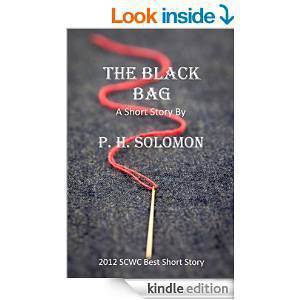 Contact page for that information. See the News page for announcements and remember to sign-up to receive news and posts by email. I’ve added a new sign-up tab on my FaceBook page to simplify the process. New followers can download The Black Bag via free coupon today! Also, the cover of my book, The Bow of Destiny, was revealed recently so take a look.
Contact page for that information. See the News page for announcements and remember to sign-up to receive news and posts by email. I’ve added a new sign-up tab on my FaceBook page to simplify the process. New followers can download The Black Bag via free coupon today! Also, the cover of my book, The Bow of Destiny, was revealed recently so take a look.
Follow Blog via Email
Enter your email address to follow this blog and receive notifications of new posts by email.
Just as a note: I am not affiliated with Scrivener in any official capacity. For support questions, pricing and other concerns please contact the vendor.
Filed under: Blogging, Cover Reveal, Creativity, Editing, Fantasy, Fiction, Indie Publishing, Planning, Scrivener, Self-publishing, Social Media, Tech Tips, The Black Bag, The Bow of Destiny, Twitter, Writing Tagged: blogging, Coverart, creativity, Editing, Facebook, Fantasy Fiction, Indie Publishing, P. H. Solomon, Scrivener, Self-publishing, Social Media, The Black Bag, The Bow of Destiny, Twitter, writing

February 26, 2015
Styling Your E-Book With Proper Formatting
Introduction
The use of styles in word processing is a bit esoteric for many users. However, when formatting an e-book, styles can be very handy. With that in mind, I’ll follow-up on last week’s post about formatting by digging a little deeper into what styles are, why they are important to e-book formatting and how to use them. As a reminder, create a back-up copy of your content before formatting so you can easily revert to the original.
Does Your Manuscript Have Style?
So what’s a style and does your book have it? Well, when considering formatting, this is not so much a question of writing style as visual presentation. You don’t want to worry about this while your actually creating your content but when you are formatting styles add, well – style.
Styles, as implied by the term, is a way of changing the appearance of your content. That’s a simple statement but there’s much more to than that. It’s basically using a template of different format settings. In Word this is done via the Styles section of the Home menu. Using different styles means you can change headings, first lines of chapters and other sections of your content when a simple click. It’s very handy when it comes to formatting.
But why should you use it?
Follow Blog via Email
Enter your email address to follow this blog and receive notifications of new posts by email.
The Importance of Styles
Your e-book needs style. It’s like when Kramer (think Seinfeld) found the wide-brimmed hat when he was wearing the coat from “Joseph and the Amazing Technicolor Dreamcoat”. It’s just not as gaudy. The use of styles adds effects to your manuscript that improve reader experience.
For instance, if you have a book with headings or chapter titles a different style that’s in bold with larger font size can be helpful. However, you don’t want to just make those changes anywhere since they can create discontinuity if used improperly like I just did. Additionally, the first line of a chapter or scene can be enhanced so that it’s noticeably different from the rest of the text and alerts readers to the change. Styles also set apart other types of content in your e-book such as copyright, end material and block quotes (non-fiction).
So that’s a thumbnail of what styles are and why you need them. But how do you use them?
How To Use Styles
The use of styles can actually range from quite simple to complex. I’ll keep it simple here for the sake of brevity but a more thorough discussion can be found in the Smashwords Style Guide. Let’s scratch the surface to get started.
Pre-set styles are on the Home menu in Word 2007 or later. My screenshots are from Word 2010 so yours may be different. First of all there are several styles of which you may need to make use: First Line of a Chapter, Normal, Block (for non-fiction), etc. These are all changed or created from the Styles Manager. It must be noted that just highlighting and changing formatting to suit your needs may not mean that these are picked up correctly when processed by Kindle or Smashwords. Styles manage formatting on a larger, more consistent scale and allows you to change the style easily with a click or two.
In Word 2010 to modify a style right click on the style and choose modify:
Follow Blog via Email
Enter your email address to follow this blog and receive notifications of new posts by email.
Next click on the format button in the lower left and choose Paragraph.
The paragraph properties for this style are displayed.
Settings such as indent, line spacing, etc can be changed here. Try to make your “Normal” style consistent with what the whole book will be. If you will be using a first line style to forego the use of indent for the beginning of a chapter try creating a separate style. There are pre-set styles for headings, titles, subtitles, etc so don’t try to re-invent these – just change them to suit your needs. Apply the various styles besides Normal wherever necessary by click to that location and clicking the applicable style and the text will be changed.
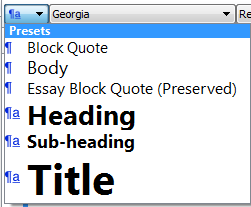 That’s the basics of managing and applying styles in Word. Scrivener is similar in that it comes with presets like Word and you can apply them from the format bar. I’ll discuss these in a later post but for now these should help you learn the basics of formatting for e-books.
That’s the basics of managing and applying styles in Word. Scrivener is similar in that it comes with presets like Word and you can apply them from the format bar. I’ll discuss these in a later post but for now these should help you learn the basics of formatting for e-books.
Have you tried formatting your e-book? What tips or tricks do you use with formatting? Please share your thoughts and ideas in the comments section. I’d also love to connect with you over social media so check my Contact page for that information. See the News page for announcements and remember to sign-up to receive news and posts by email. I’ve added a new sign-up tab on my FaceBook page to simplify the process. New followers can download The Black Bag via free coupon today! Also, the cover of my book, The Bow of Destiny, was revealed recently so take a look.
Follow Blog via Email
Enter your email address to follow this blog and receive notifications of new posts by email.

Filed under: Blogging, Cover Reveal, Creativity, Editing, Indie Publishing, Planning, Scrivener, Self-publishing, Social Media, Tech Tips, Templates, Tips, Writing Tagged: blogging, creativity, Editing, Facebook, Formatting, Indie Publishing, P. H. Solomon, Planning, Self-publishing, Smashwords, Styles, The Black Bag, The Bow of Destiny, Tips, Twitter, Word, writing


